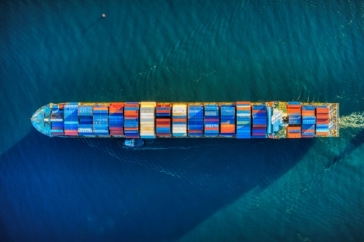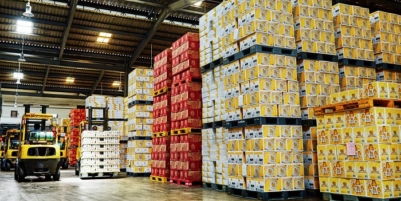-
Nutrivend selects Forterro’s Orderwise to support online expansion and streamline operations - April 11, 2025
-
ARROWXL LAUNCHES AMBITIOUS ZERO WASTE ROADMAP - April 8, 2025
-
THE BCMPA’S NEW CAMPAIGN DRIVES OUTSOURCING SUCCESS IN Q1 - April 7, 2025
-
BLACKOUT TECHNOLOGIES TARGETS TELEMATICS-INTEGRATED MOBILE DEVICE BLOCKING TO COMBAT SMARTPHONE DISTRACTION - April 1, 2025
-
OpenADR Alliance announces first OpenADR 3.0 certified products with EVoke Systems, E.ON Energy and Universal Devices - March 25, 2025
-
Growing fulfilment and contract packer appoints new Managing Director - March 25, 2025
-
When is it time to invest in a WMS? Understanding the key trigger points - March 25, 2025
-
eCapital helps Vantage Recruitment on its journey to financial success - March 24, 2025
-
Hugo Beck Celebrates 70 Years of Packaging Innovation with Open House Events - March 20, 2025
-
PROLOG FULFILMENT SUPPORTS LUNA DAILY’S COMMITMENT TO BETTER BODY CARE FOR ALL WOMEN - March 19, 2025
“Nearshoring” — the process of moving business operations closer to the marketplace — is set to alleviate the global supply chain chaos in the United States. In fact, almost two-thirds of shippers believe supply chains are now too global and need to be shifted towards more regional and local ecosystems. Although the trend toward nearshoring began at least a decade ago, the pandemic highlighted the need for greater control over the supply chain and mitigate risk by reducing overseas dependency.
Eliminating the risk of single source supplies
The pandemic highlighted the risks posed by a single source of supply: the impact of a virus outbreak at a manufacturing plant in Asia, for instance, can be felt across the globe. As such, traditional global networks are increasingly being replaced with regional or local networks. “When a global link breaks, regional links need to be self-sustainable,” says Sylvie Thompson, a supply chain consultant with NTT Data Services. Issues like steep transportation costs and raw materials shortages are expected to continue until regional links are solidified. “Whether we like it or not, all supply chains are related. Until the world gets the virus under control, supply chains are going to continue to be disrupted,” says Thompson. 83% of shippers have experienced disrupted key materials supplies so far in 2022, compared to just 49% last year. As such, 83% of shippers say they consequently intend to change sources of supply in favor of regional and domestic sources.
Technological advancements
Moreover, technological advancements like automation and conveyor solutions across multiple sectors can further increase efficiency and production output. These solutions can also decrease operational costs in warehouse or production facilities. Additionally, cutting-edge tech, such as, robotics, 5G, Internet of Things, real-time data transmission, and data analytics are further collectively set to improve the supply chain and keep distractions at bay. With the latest advanced technology, logistics managers can benefit from sharper insights into all aspects of the supply chain and solve problems faster and as they arise. “5G reduces the amount of latency, so it is much more real-time, which is important because there is a large amount of data that has to travel back and forth”, says Dave Bushee, Senior VP of information technology for Penske Logistics. In fact, 56% of third-party logistics managers say it’s now moderately or extremely important to provide clients with 5G-enabled services.
Nevertheless, “tech-driven productivity improvements can only help so much,” notes Thompson. “No amount of technology is going to resolve some of the capacity issues, but it will give us more agility to adjust to maintain production”. Since many elements of the supply chain still require human intervention, human labor will still be in high demand. Yet, with around 45% of companies across the United States hoping to shift production locations within the next three years, the reverberations of an isolated breakdown in the global supply chain will hopefully ultimately be minimized in the future.

































